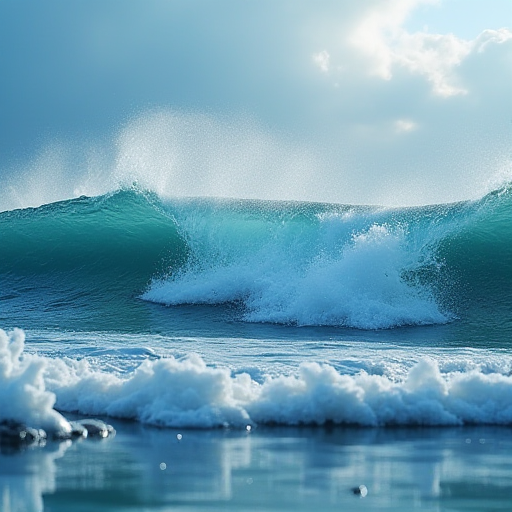
Why is the Ocean Salty?
The ocean, which covers over 70% of the Earth's surface, is known for its vast expanse of saline water. But why is the ocean salty? This question, while seemingly simple, taps into complex processes involving the Earth's geology, chemistry, and hydrology. This article will explore the origins of ocean salinity, the contributing factors, and the implications for marine life and global ecosystems.
The Origins of Ocean Salinity
1. Weathering of Rocks
The primary source of the ocean's saltiness is the weathering of rocks on land. When rainwater falls, it is slightly acidic due to dissolved carbon dioxide from the atmosphere, forming a weak carbonic acid. As this rainwater flows over rocks, it reacts with minerals in the rocks, causing them to break down and dissolve. This process releases ions, such as sodium and chloride, which are carried by rivers and streams into the ocean.
2. Volcanic Activity
Volcanic eruptions, both underwater and on land, also contribute to the ocean's salinity. Volcanic activity releases gases and minerals, including chlorine and sulfur compounds. When these gases dissolve in water, they contribute to the salinity of the ocean. Underwater volcanic eruptions, or hydrothermal vents, are particularly significant in releasing mineral-rich water into the ocean depths.
3. Evaporation
Evaporation plays a crucial role in increasing the ocean's salt concentration. When ocean water evaporates, it leaves the salts behind. This process is most pronounced in regions with high temperatures and low precipitation, such as the Mediterranean Sea and the Red Sea, where salinity levels can be significantly higher than the global average.
Factors Influencing Ocean Salinity
1. Ocean Circulation
Ocean currents distribute salinity across the globe. The movement of water masses helps balance salinity levels by mixing saltier and fresher waters. For instance, the Gulf Stream carries warm, salty water from the tropics to the North Atlantic, affecting regional salinity levels.
2. Climate and Weather Patterns
Climate and weather patterns significantly impact ocean salinity. For example, increased rainfall in certain regions can dilute seawater, reducing salinity. Conversely, prolonged dry spells can increase salinity due to higher rates of evaporation.
3. Ice Formation and Melting
The formation and melting of sea ice also influence salinity. When seawater freezes, the salt is left behind, increasing the salinity of the surrounding water. Conversely, when ice melts, it adds fresh water, decreasing salinity.
Implications of Ocean Salinity
1. Marine Life
Salinity is a critical factor for marine organisms. Many species are adapted to specific salinity levels, and changes can affect their survival, reproduction, and distribution. For example, some fish and invertebrates are stenohaline, meaning they can only tolerate a narrow range of salinity.
2. Ocean Circulation and Climate
Salinity, along with temperature, affects ocean circulation patterns, such as thermohaline circulation, which plays a pivotal role in regulating the Earth's climate by distributing heat around the planet. Changes in salinity can alter these circulation patterns, potentially impacting global climate systems.
3. Human Activities
Human activities, such as desalination, agriculture, and urban development, can influence local salinity levels. For instance, excessive water extraction and irrigation can lead to increased runoff and changes in river flow, affecting the salinity of estuaries and coastal regions.
Conclusion
The salinity of the ocean is a result of complex interactions between geological, chemical, and hydrological processes. Understanding these processes is crucial, as salinity not only affects marine ecosystems but also plays a vital role in Earth's climate system. As we continue to explore the ocean's mysteries, recognizing the importance of salinity will be essential for maintaining the health of our planet and its diverse life forms.
